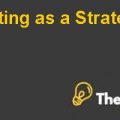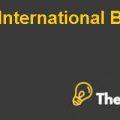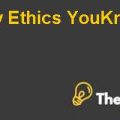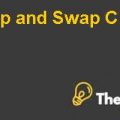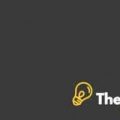
On the other hand, there are certain disadvantages of this code of conduct that restrict them from achieving the advantages mentioned above. The major and most apparent disadvantage is the implementation of the code of conduct and the issue regarding the assurance of the results expected. Second flaw is establishing and setting a code of conduct accepted by everyone in the organization that will also restrict and punish the violators. Unwillingness has been shown by businesses regarding catering the violators and taking steps to enable them to accept the set code of conduct (Archie B. Carroll, 2014). The major flaw is the vagueness of the code of conduct that restricts them from achieving the primary objective.
Codes of conduct result in failure mostly because people fail to adapt them or to some extent don’t feel responsible for their behaviors, and that is why the code of conduct is rejected. A major reason for the failure also includes the problems organizations have in implementing these issues. Efforts are dedicated towards writing and designing the guideline manuals, but less focus is given on an implementation that is when the failure occurs. Mostly, people are required to be involved in preparing the code of conduct for ethics. Therefore, organizations should emphasize more on implementation of the code of conduct effectively rather than just developing the code of conduct. The role of the organization is vital in shaping the behaviors of people and allowing them to either behave ethically or unethically.
Kirk Tyson’s Eight-Step Implementation plan suggests that monitoring employees' intelligence and the activities resulting as a course of that intelligence is vital for organizations rather than tactically handling the knowledge of employees. The plan has identified or addressed issues that organizations face in implementing ethical codes and the role of organizational culture and pressure exerted on it. Organizations can implement a strong ethical culture by training and guiding their employees and support from top management is also essential for implementing an ethical culture. In some organizations ethical culture is enforced by power and by putting pressure on employees (Tyson, 1991).
Ethical Theory and Empowerment
A new trend in management has occurred known as empowerment, and its role has been overemphasized but a theory clearly rejects the role of empowerment known as value-based management. Having roots associated with the ethical theory, value-based management gave considerable support in shaping the behavior of employees by giving them the responsibility. The core concept or the philosophy of the theory is to reduce detailed regulations and to help in implementing the concept of controlling and sanctioning. The theory has emphasized on individual decision making and the rational behavior of employees or an individual decision makers towards the goal and policies of the firm along with the values of the organization. The concept has addressed the issue that shaping behavior of employees using formal documentation, or written rules that are enforced by exerting pressure cannot provide the desired results (Poul Bonde Jensen, 1999).
The Effect of Formalized Rules
Theories related to value base management sometimes do not present the clear objective or view of ethical boundaries or responsibilities and about institutionalizing these boundaries. The society has submerged all the moral and social responsibilities on the governments and organizations and gave them the power or responsibility to implement ethical behaviors. On the other hand, the rules have changed and focused on viewing responsibility for individual behavior.
According to the directors of CREDO, the Center of Research for Business Ethics, it has been stated that the question exists that the ethical behaviors result due to ethical guidelines or they are just lying, no impact on shaping ethical behaviors or to be precise restrict the behaviors as people only follow the stated rules as written in the guidelines and not adopt them (Verner C Petersen, 1999).
Setting guidelines for performing ethically may provoke opposite behavior from people as theories and history suggest that human nature doesn’t allow people to follow guidelines and always try to break the set boundaries. Employees in an organization when given a code of conduct in the shape of written guidelines will always try to break the set limits and skip through the moral mazes set within the organization (Jackall, 2009).
The Role of Professional Standards
Self-regulation plays a vital role in setting or creating professional standards, and these regulations are considered more as the industrial regulations rather than business regulations as explained by ethical codes. These standards have a major flaw as they require a consensus in order to turn a norm into a standard (Donald R Cressey, 1983)...........................
This is just a sample partial case solution. Please place the order on the website to order your own originally done case solution.

